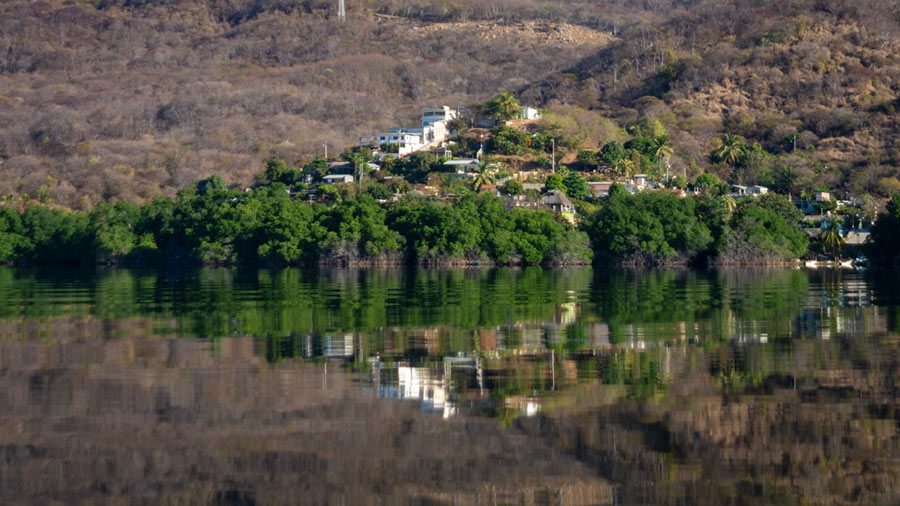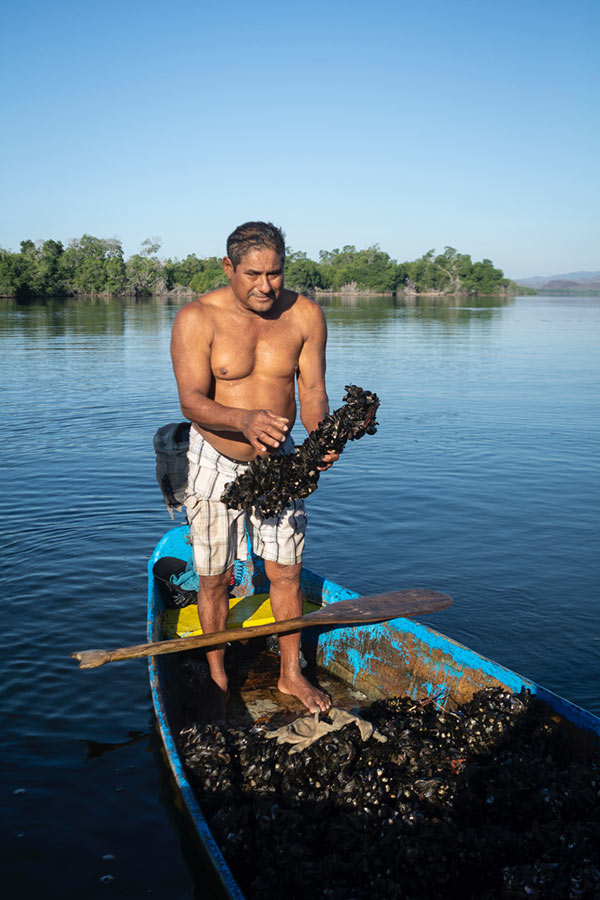
Morning in The Manialtepec Lagoon
THE MANIALTEPEC LAGOON IS A LAKE FED BY THE MANIALTEPEC River for most of the year. In the rainy season, however, it becomes a tidal estuary of the Pacific Ocean. There are two barrier beaches that separate the lagoon from the sea: one, called the Barra, is east of Puerto Suelo, the other, Barrita, is where the Manialtepec River delta begins, a few hundred meters west of Puerto Suelo.
The river swells in the rainy season and the lagoon rises vertically up to 1.5 meters and floods out of the mangrove forests into the surrounding fields. The restaurants on the north shore start filling their sandbags and the ranchers move their cattle. Then the river leaps the barrier beach at the Barrita. Except usually it doesn’t, because before the water rises to that point, a breach is made in the Barra so that the delta water can enter the sea and the sea can enter the lagoon. An assembly is called of fishermen, farmers, ranchers, and eco-tourism and restaurant operators, and arrangements are made to bring in a backhoe. Th e breach is opened from the ocean side of the barrier.
When the barrier beach falls the level of the lagoon falls with it, even though the fresh water is partially replenished by the salt water of the sea. This is when the fishermen get their biggest hauls, trapping ocean fish in their nets. It is also when the lagoon’s giant shrimp go out to sea to spawn. Snook (robalo), mojarra, and red snapper (pargo) are coastal fish that also live in the lagoon.
After the rainy season ends in November, the river delta recedes, and the barrier beach closes the lagoon again. Now the catch is mostly small fish like mullet (lisa), white mojarra, black axillary mojarra (malacapa) and cat fish (cuatete) as well as shrimp, crabs (jaiva) and clams (almeja). You will not find malacapa in the market in Puerto, but it is much favored in Pintotepa Nacional where it is used in fish soup. To prevent overfishing the number of licensed fishermen is regulated by the National Commission of Aquiculture and Fishing (Conapesca).














